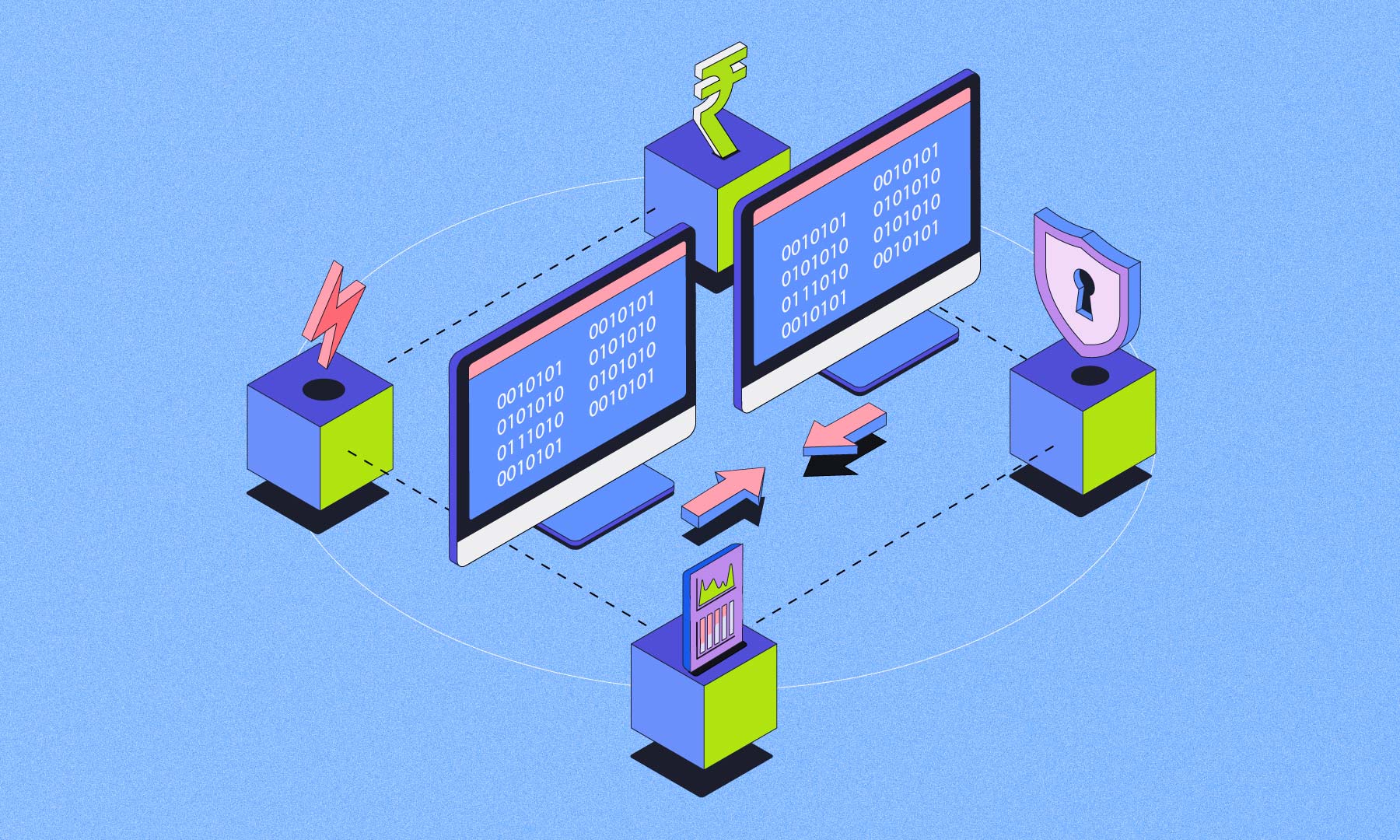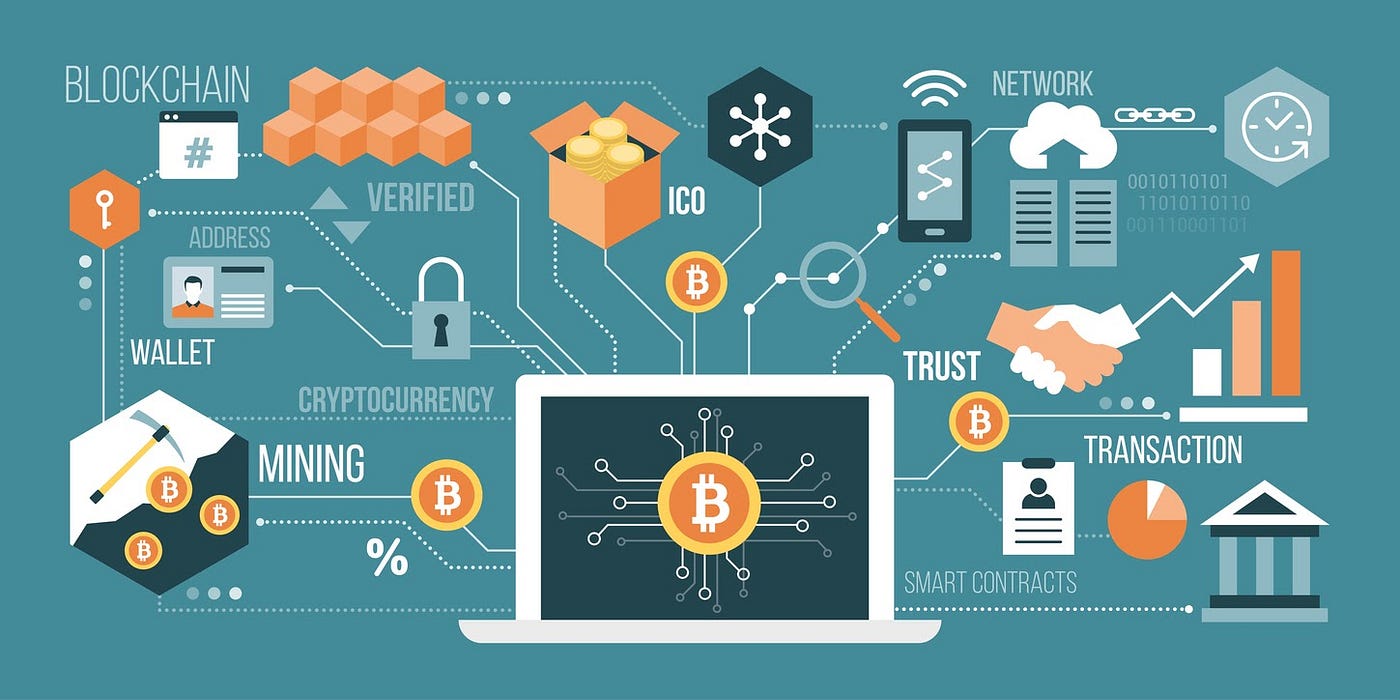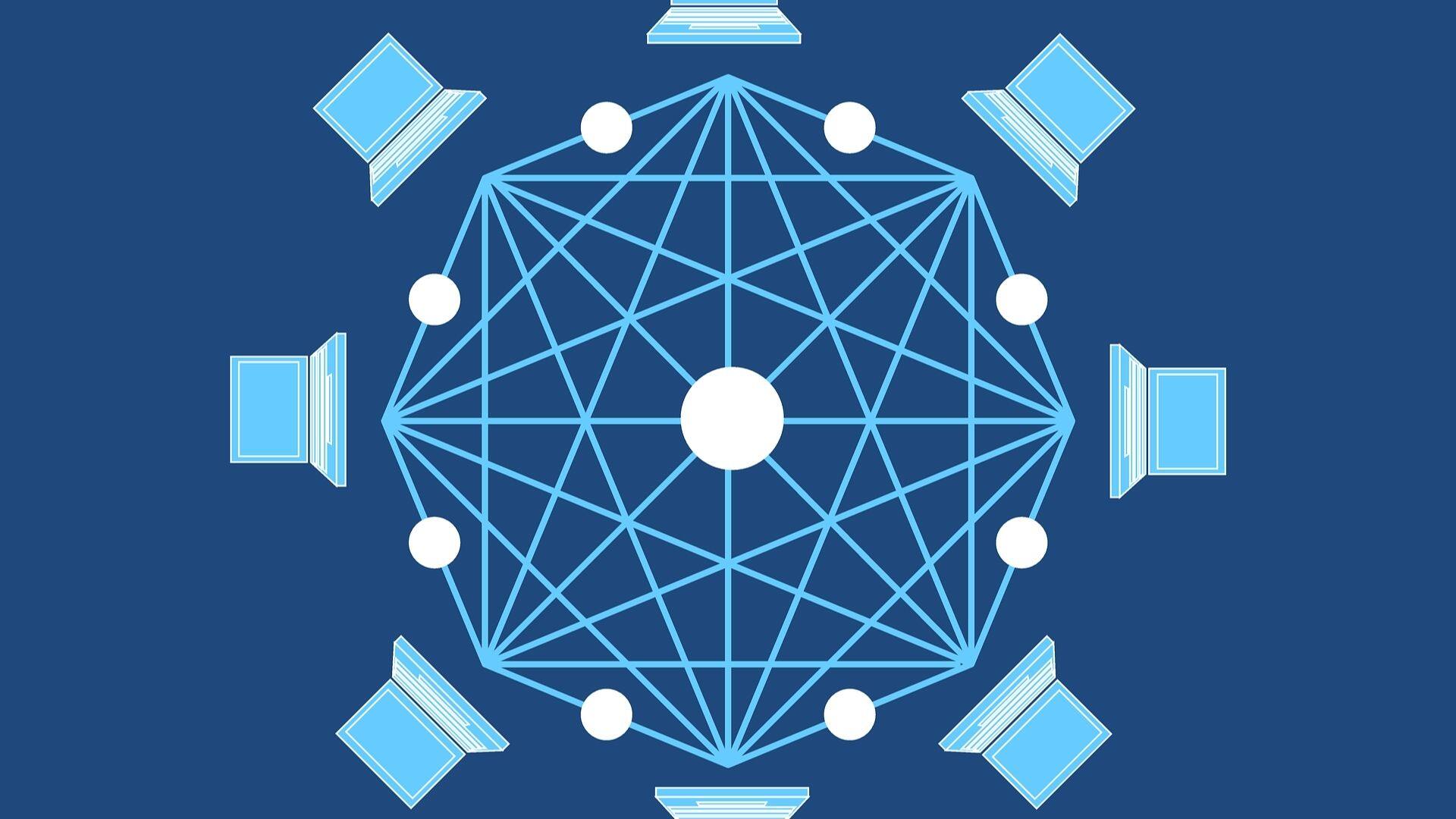Introduction
Welcome to the digital age, where organizations are flooded with vast amounts of valuable data that can potentially revolutionize their operations and decision-making processes. However, data sharing among organizations has always been a challenge. With concerns about security, privacy, and trust, sharing data can often be a complex and risky endeavor.
Fortunately, blockchain technology has emerged as a game-changer in the world of data sharing. Originally developed to power cryptocurrencies like Bitcoin, blockchain has evolved beyond its financial origins to offer a secure and transparent way for organizations to share and access data.
Blockchain technology provides a decentralized and distributed ledger system that allows organizations to securely store and share data in a tamper-evident and immutable manner. By leveraging cryptographic techniques and consensus algorithms, blockchain eliminates the need for intermediaries while ensuring data integrity and immutability.
But how does blockchain technology actually help organizations when sharing data? In this article, we will explore the various benefits, challenges, and mechanisms of blockchain-based data sharing. We will delve into the enhanced security and privacy measures, the increased transparency and trust, and the streamlined processes that blockchain technology brings to data sharing initiatives.
Through real-world examples, we will showcase how organizations have successfully embraced blockchain to improve their data sharing practices. By the end of this article, you will have a deeper understanding of how blockchain technology can transform the way organizations share and leverage data, opening up new possibilities and opportunities for collaboration.
Definition of Blockchain Technology
Before we dive into the benefits and applications of blockchain technology for data sharing, let’s first define what exactly blockchain is. At its core, blockchain is a distributed ledger technology that allows multiple parties to maintain a shared record of transactions or information in a secure and transparent manner.
Blockchain operates on a decentralized network of computers, known as nodes, where each node maintains a copy of the entire blockchain. Every transaction or data update is recorded in a “block,” which is then added to a chronological chain of blocks, hence the name “blockchain.”
One of the key features of blockchain technology is its immutability. Once a block has been added to the chain, it cannot be altered or deleted without the consensus of the majority of the network participants. This ensures the integrity and trustworthiness of the data stored on the blockchain.
Blockchain achieves this immutability through cryptographic techniques. Each block contains a unique identifier, called a cryptographic hash, which is generated based on the data it holds. Any modification to the data will result in a different hash value, making it easy to detect and prevent tampering.
Another important aspect of blockchain technology is its transparency. While the data stored on the blockchain is immutable and secure, it is also accessible to all participants in the network. This transparency promotes accountability and trust among the network participants as they can independently verify the integrity of the data.
Furthermore, blockchain operates on a consensus mechanism that ensures the agreement of all nodes on the state of the blockchain. Different blockchain networks may employ various consensus algorithms, such as Proof of Work (PoW) or Proof of Stake (PoS), to validate and confirm transactions.
Overall, blockchain technology provides a decentralized and secure platform for storing, sharing, and verifying data. Its key characteristics of immutability, transparency, and consensus make it an ideal solution for organizations looking to enhance their data sharing practices and achieve greater trust and efficiency in their operations.
Benefits of Sharing Data in Organizations
Data sharing is a fundamental aspect of modern organizations, and it can bring numerous benefits to both the organization itself and its stakeholders. Let’s explore some of the key advantages of sharing data.
1. Enhanced Decision Making: When organizations share data, they gain access to a wider pool of information, which can help in making more informed decisions. By analyzing data from various sources and collaborating with external partners, organizations can uncover valuable insights and trends that may not be apparent through internal data alone.
2. Improved Efficiency and Productivity: Sharing data across departments and teams promotes collaboration and eliminates silos. By having a centralized repository of data that is accessible to all relevant parties, organizations can streamline processes, avoid duplicate efforts, and improve overall efficiency and productivity.
3. Innovation and Research: Sharing data can foster innovation and encourage research and development efforts. By allowing researchers and scientists access to relevant data, organizations can boost innovation, drive discoveries, and contribute to the advancement of their industry.
4. Cost Savings: Data sharing can lead to cost savings for organizations. By pooling resources and sharing data with external partners or suppliers, organizations can negotiate better deals, optimize their supply chain, and reduce operational expenses.
5. Improved Customer Experience: Sharing data allows organizations to better understand their customers and tailor their products and services to meet their needs. By analyzing customer data from various touchpoints, organizations can personalize their offerings, deliver targeted marketing campaigns, and enhance the overall customer experience.
6. Collaboration and Partnerships: Data sharing facilitates collaboration and partnerships between organizations. By sharing relevant data with external partners, organizations can build stronger relationships, create new business opportunities, and foster innovation through joint projects and initiatives.
Overall, sharing data within organizations brings multiple benefits, including improved decision-making, increased efficiency and productivity, cost savings, and enhanced customer experiences. By recognizing the value and potential of data sharing, organizations can unlock new opportunities and gain a competitive edge in today’s data-driven world.
Challenges in Data Sharing
While the benefits of data sharing are significant, organizations often face several challenges when it comes to sharing their data. These challenges can hinder effective collaboration and impede the potential value that data sharing can bring. Let’s explore some common challenges in data sharing.
1. Security and Privacy Concerns: One of the primary concerns in data sharing is ensuring the security and privacy of the shared data. Organizations need to protect sensitive information and ensure that it is only accessed by authorized individuals or entities. The risk of data breaches and unauthorized access poses a significant challenge to data sharing initiatives.
2. Data Governance and Compliance: Organizations must navigate various data governance and compliance requirements when sharing data. Compliance with data protection regulations, industry standards, and contractual obligations can be complex, especially when external partners are involved. Ensuring data governance and compliance across multiple organizations can be challenging to coordinate.
3. Data Quality and Standardization: When data is shared between different organizations, ensuring consistent data quality and standardization becomes crucial. Data may vary in structure, format, and semantics, making it challenging to integrate and analyze effectively. Organizations need to establish mechanisms to address data quality issues and promote data standardization to enable seamless data sharing.
4. Lack of Trust and Collaboration: Data sharing often involves collaboration with external partners or competitors. Building trust among different organizations and establishing collaborative frameworks can be challenging. Concerns about data ownership, control, and misuse can hinder the willingness to share data and impede successful collaboration.
5. Technical Integration and Interoperability: Integrating data systems and ensuring interoperability between different platforms and technologies is a significant challenge in data sharing. Diverse data formats, data management systems, and IT infrastructures can create compatibility issues and require substantial technical efforts to facilitate seamless data exchange.
6. Cultural and Organizational Barriers: Data sharing may require cultural and organizational shifts within participating organizations. Resistance to change, lack of data sharing culture, and organizational hierarchies can pose challenges in promoting a collaborative and data-sharing mindset. Overcoming these barriers requires commitment and leadership from all stakeholders.
Addressing these challenges is crucial for organizations to reap the benefits of data sharing. By implementing robust data governance frameworks, investing in cybersecurity measures, promoting data standardization, fostering trust and collaboration, and addressing cultural and organizational barriers, organizations can overcome these challenges and establish successful data sharing initiatives.
How Does Blockchain Technology Work in Data Sharing
Blockchain technology revolutionizes data sharing by providing a decentralized, secure, and transparent platform. Let’s explore how blockchain works in the context of data sharing.
1. Decentralization: Traditional data sharing relies on centralized intermediaries to facilitate the exchange of data. With blockchain, data sharing becomes decentralized, eliminating the need for intermediaries. Instead, the data is stored and shared across a network of computers, known as nodes, which collectively maintain the blockchain.
2. Immutable and Tamper-Proof Data: Blockchain ensures the integrity of shared data by using cryptographic hashing. Each block in the blockchain contains a unique identifier, or hash, generated based on the data it holds. Any change in the data would result in a different hash value, making it easy to detect and prevent tampering.
3. Distributed Ledger: Every node in the blockchain network maintains a copy of the entire blockchain. When a new block of data is added, it is distributed and validated by all the nodes. This distributed ledger ensures that all participants have access to the same information, promoting transparency and accountability.
4. Consensus Mechanism: Blockchain uses consensus mechanisms to verify and validate transactions or data updates. Different blockchain networks may employ various consensus algorithms, such as Proof of Work (PoW) or Proof of Stake (PoS). Consensus ensures that all nodes agree on the validity of the data being added to the blockchain.
5. Smart Contracts: Blockchain technology often incorporates smart contracts, which are self-executing contracts with predefined rules and conditions. Smart contracts automate the execution and enforcement of agreements between parties, eliminating the need for intermediaries and ensuring trust and transparency in data sharing transactions.
6. Access Control and Privacy: Blockchain enables granular access control and privacy features. Participants can interact with specific data on the blockchain based on their permissions and cryptographic keys. This ensures that sensitive data is only accessible to authorized individuals or entities, enhancing data security and privacy in data sharing.
7. Interoperability and Integration: Blockchain technology can integrate with existing systems and databases through application programming interfaces (APIs). This allows organizations to leverage the benefits of blockchain while maintaining interoperability with their current infrastructure, simplifying the integration process.
Overall, blockchain technology transforms data sharing by providing a decentralized, immutable, and transparent platform. By leveraging cryptographic techniques, consensus mechanisms, smart contracts, and access controls, blockchain ensures data integrity, privacy, and security. Organizations can benefit from the efficiency, trust, and collaboration that blockchain brings to their data sharing initiatives.
Security and Privacy in Blockchain-based Data Sharing
Blockchain technology offers robust security and privacy measures that address the concerns associated with data sharing. Let’s explore how blockchain ensures security and privacy in the context of data sharing.
1. Immutability and Tamper-Evident Data: Blockchain’s immutability ensures that once data is added to the blockchain, it cannot be altered without the consensus of the network participants. This tamper-evident nature of blockchain makes it highly secure for storing and sharing sensitive data. Any modification or tampering attempt in the data would result in a change in the hash value, immediately alerting the network participants.
2. Cryptographic Techniques: Blockchain uses advanced cryptographic techniques to secure data sharing. Data stored on the blockchain is encrypted and can only be accessed by individuals or entities with the necessary cryptographic keys. This ensures that sensitive data remains confidential and protected from unauthorized access.
3. Access Control and Permissions: Blockchain enables granular access control and permissions through public-key cryptography. Each participant in the blockchain network has a unique cryptographic key that grants them access to specific data based on their permissions. This ensures that only authorized individuals or entities can access and interact with sensitive data, enhancing data privacy.
4. Distributed Ledger and Consensus: The distributed nature of the blockchain ledger ensures that no single entity has control over the data. Each participant in the network maintains a copy of the entire blockchain, promoting transparency and reducing the vulnerability to attacks or manipulation by a single party. Consensus mechanisms, such as Proof of Work (PoW) or Proof of Stake (PoS), validate and secure the data added to the blockchain, further enhancing data security.
5. Private and Permissioned Blockchains: In addition to public blockchains, which are open to everyone, there are private and permissioned blockchains that offer enhanced privacy and control. Private blockchains restrict access to a select group of participants, while permissioned blockchains require authentication and authorization to join the network. These types of blockchains are often used in enterprise settings where sensitive data sharing is involved.
6. Auditing and Transparency: Blockchain provides transparency by allowing all network participants to view and verify the data stored on the blockchain. This transparency enhances accountability and can help detect any anomalies or fraudulent activities. Moreover, blockchain provides an immutable audit trail of all transactions, enabling organizations to trace and verify the origin and history of shared data.
By leveraging these security and privacy features, blockchain technology addresses the challenges associated with data sharing. Organizations can confidently share sensitive data, knowing that it is secured through the immutability and tamper-evident nature of blockchain, cryptographic techniques, fine-grained access control, and the transparency provided by the distributed ledger. Blockchain-based data sharing enables organizations to protect their data while maintaining trust and confidentiality.
Increased Transparency and Trust in Data Sharing
Transparency and trust are two vital elements in any data sharing initiative, and blockchain technology plays a significant role in enhancing both aspects. Let’s explore how blockchain increases transparency and trust in data sharing.
1. Immutable and Transparent Ledger: Blockchain operates on a distributed ledger, where each participant maintains a copy of the entire blockchain. The distributed nature of the ledger ensures transparency, as all participants can independently validate and verify the data stored on the blockchain. Any changes or updates made to the data are recorded and visible to all network participants, eliminating the need for blind trust in intermediaries.
2. Blockchain Consensus: Consensus mechanisms, such as Proof of Work (PoW) or Proof of Stake (PoS), ensure that all network participants agree on the validity of transactions or data updates. This consensus process provides a greater level of trust, as it requires the majority of participants to reach a consensus before a new block can be added to the blockchain. This decentralized verification mechanism enhances transparency and reduces the risk of fraudulent or malicious activities.
3. Tamper-Evident Data: Blockchain’s immutability ensures that once data is recorded on the blockchain, it cannot be altered or deleted without consensus. Any attempt to tamper with the data would be immediately detected by the network participants, as the cryptographic hash of the block would change. This tamper-evident nature of blockchain inspires trust in the integrity and immutability of the shared data.
4. Enhanced Auditability: Blockchain provides an indelible audit trail of all transactions and data exchanges. Each transaction recorded on the blockchain retains a permanent and transparent record of its origin, timestamp, and participants involved. This auditability promotes accountability and facilitates traceability, enabling organizations to easily track and verify the history and provenance of shared data.
5. Smart Contracts: Smart contracts, automated self-executing agreements on the blockchain, contribute to increased transparency and trust. Smart contracts define the rules and conditions of data sharing, ensuring that participants adhere to the agreed-upon terms. The transparent nature of smart contracts eliminates the need for intermediaries and establishes trust in the enforcement and execution of data sharing agreements.
6. External Verification: Blockchain enables external parties to independently verify the data stored on the blockchain. This external verification, facilitated by the transparency and accessibility of the blockchain, builds trust among stakeholders, partners, and customers. External audits or certifications can be conducted more efficiently and effectively, enhancing trust and credibility in the shared data.
By leveraging blockchain technology, organizations can increase transparency and trust in their data sharing initiatives. Blockchain’s immutable and transparent ledger, consensus mechanisms, tamper-evident data, enhanced auditability, smart contracts, and external verification all contribute to creating a secure and trusted environment for data sharing. Through blockchain-based data sharing, organizations can foster trust among stakeholders, promote accountability, and establish a new level of transparency in their operations.
Streamlining Processes and Reducing Costs through Blockchain Technology
Blockchain technology offers organizations the opportunity to streamline processes and reduce costs by eliminating intermediaries, improving efficiency, and optimizing resource allocation. Let’s explore how blockchain achieves these benefits.
1. Removal of Intermediaries: Blockchain technology allows organizations to directly interact and transact with each other without the need for intermediaries. By eliminating intermediaries, such as banks or third-party payment processors, organizations can reduce transaction fees and processing times. This streamlined process not only reduces costs but also enhances efficiency and removes potential points of failure or delays in the data sharing process.
2. Automation through Smart Contracts: Smart contracts are self-executing agreements stored on the blockchain. These contracts automatically execute predefined actions once the specified conditions are met. By leveraging smart contracts, organizations can automate various processes, from payments and supply chain logistics to intellectual property rights management. The automation aspect of smart contracts reduces the need for manual intervention, saving time and costs associated with administrative tasks.
3. Enhanced Efficiency and Accuracy: Blockchain’s distributed ledger system ensures that all participants have access to the same up-to-date data. This transparency and real-time availability of data reduce the need for data reconciliation and manual data entry, reducing the chances of errors and discrepancies. With a single source of truth, organizations can streamline their processes, make more informed decisions, and avoid time-consuming and costly data discrepancies or disputes.
4. Supply Chain Optimization: Blockchain can revolutionize supply chain management by providing real-time visibility and traceability of goods. Organizations can track and verify the provenance, quality, and authenticity of products along the supply chain, ensuring compliance with regulatory standards and reducing the risks of counterfeiting or fraudulent activities. This increased transparency and optimization in the supply chain can lead to cost savings, improved inventory management, and enhanced customer satisfaction.
5. Efficient Identity Management: Blockchain technology can streamline and enhance identity management processes. With blockchain, individuals can control their digital identities and selectively share specific attributes with organizations. This decentralized approach to identity management eliminates the need for multiple identity verification processes, reducing costs, and enhancing security. Organizations can also benefit from streamlined customer onboarding processes, simplified KYC (Know Your Customer) compliance, and reduced risks of identity theft or fraud.
6. Cost Savings in Data Storage: Blockchain’s distributed ledger system allows organizations to store data across a network of nodes rather than relying on centralized databases or servers. This decentralized storage reduces the costs associated with maintaining and securing traditional data storage systems. Organizations also have the option to leverage blockchain-based cloud storage solutions that offer secure and cost-effective storage for large amounts of data.
By leveraging blockchain technology, organizations can streamline their processes, reduce costs, and improve efficiency. The removal of intermediaries, automation through smart contracts, increased efficiency and accuracy, supply chain optimization, efficient identity management, and cost savings in data storage all contribute to achieving these benefits. As organizations embrace blockchain, they open up new possibilities for greater efficiency, transparency, and cost optimization in their operations.
Real-world Examples of Organizations Using Blockchain for Data Sharing
Blockchain technology has gained significant traction across various industries, with organizations embracing its potential for secure and transparent data sharing. Let’s explore some real-world examples of organizations that are utilizing blockchain for data sharing purposes.
1. IBM Food Trust: IBM Food Trust, powered by blockchain, aims to improve the traceability and transparency of the food supply chain. Through blockchain, participating organizations can track the journey of food products from farm to table, ensuring safety and authenticity. This enables consumers to make more informed choices about the food they purchase while enhancing supply chain efficiency.
2. Maersk and IBM’s TradeLens: TradeLens is a blockchain-based platform developed by Maersk and IBM, designed to digitize and streamline global trade processes. It provides a secure and transparent ecosystem for all stakeholders involved in the supply chain, including shipping lines, ports, customs agencies, and logistics providers. By using blockchain, TradeLens enables real-time collaboration and data sharing, reducing paperwork, and increasing efficiency in global trade.
3. Everledger: Everledger utilizes blockchain technology to combat fraud and counterfeit products, particularly in the diamond industry. By creating a digital identity for each diamond recorded on the blockchain, Everledger ensures the authenticity and provenance of diamonds, reducing the risk of fraud and promoting transparency in the marketplace.
4. Provenance: Provenance is a blockchain-based platform that enables product traceability and transparency. It allows consumers to track the journey of products, including their origins, manufacturing processes, and environmental impact. By providing this information, Provenance empowers consumers to make ethical purchasing decisions and holds companies accountable for their claims.
5. Microsoft Azure Blockchain Service: Microsoft offers Azure Blockchain Service, a cloud-based platform that enables organizations to build, deploy, and manage blockchain networks. Many organizations use this service to develop their own blockchain-based solutions tailored to their specific data sharing needs.
6. B3i: B3i (Blockchain Insurance Industry Initiative) is a consortium of insurance and reinsurance companies leveraging blockchain for data sharing and secure transactions. By using blockchain, B3i aims to improve processes such as policy creation, claims settlement, and reinsurance, enhancing efficiency and reducing administrative costs in the insurance industry.
These real-world examples demonstrate the wide range of industries and use cases where blockchain is being utilized for data sharing. Whether it is enhancing supply chain transparency, ensuring the authenticity of products, streamlining trade processes, or improving trust in the insurance industry, blockchain technology is revolutionizing data sharing practices and paving the way for more secure and efficient business operations.
Conclusion
Blockchain technology has emerged as a powerful tool for organizations seeking to enhance their data sharing practices. By leveraging the decentralized, transparent, and secure nature of blockchain, organizations can overcome the challenges associated with data sharing, while reaping numerous benefits.
Through blockchain technology, organizations can achieve increased transparency and trust in data sharing. The immutability and tamper-evident nature of blockchain, combined with the use of cryptographic techniques and consensus mechanisms, ensure the integrity and security of shared data. This promotes accountability, eliminates the need for intermediaries, and fosters trust among stakeholders.
Moreover, blockchain technology streamlines processes and reduces costs. By removing intermediaries, automating through smart contracts, increasing efficiency and accuracy, optimizing supply chains, enabling efficient identity management, and realizing cost savings in data storage, organizations can achieve greater operational efficiency and cost optimization.
Real-world examples of organizations using blockchain for data sharing, such as IBM Food Trust, TradeLens, Everledger, Provenance, Microsoft Azure Blockchain Service, and B3i, demonstrate the wide range of industries embracing blockchain’s potential.
When implementing blockchain for data sharing, organizations need to consider relevant factors such as data security, privacy, data quality, governance, and compliance. Proper planning, collaboration, and infrastructure development are essential for successful implementation.
As blockchain technology continues to evolve and mature, the possibilities for secure and efficient data sharing are boundless. Organizations that embrace blockchain will not only enhance their decision-making processes, improve efficiency, and reduce costs but also establish themselves as leaders in a data-driven economy.
By harnessing the power of blockchain technology, organizations can unlock new levels of transparency, trust, and collaboration in their data sharing initiatives, opening doors to innovation and driving their success in the digital age.

























